Editor’s Note: This is a comparison between the ancient epic, The Odyssey and the modern film O Brother, Where Art Thou? One important point is that in the citations for the film, the time on the DVD version of the movie is given. In other words, if you go to that particular point on the DVD, you can see what is being discussed.
As long as humans have gathered together, they have told stories. One of the archetypes of storytelling is that of the lost soul, struggling to find his or her way home. Tumultuous experiences, terrible odds, and horrifying foes confront the protagonist, who must overcome them all, in order to successfully complete the journey. One of the iconic examples of this archetype is Homer’s The Odyssey, which tells of Odysseus (or Ulysses) and his attempt to return to his home in Ithaca, after the conclusion of the Trojan War. As such, Homer’s epic poem serves as a sort of sequel to The Iliad. Since this work was originally penned nearly three thousand years ago, many others have taken up the story and use it as a foundation for new renditions. Recently, the Coen Brothers, Joel and Ethan, used The Odyssey as the structural foundation for their popular film, O Brother, Where Are Thou?.
While not an exact transposition of Homer’s original, the influence that the written work has on the movie is evident. Both versions show the protagonist struggling to reach home in order to save his family. Both allow for supernatural elements to oppose, or at times to support, the hero on his journey. Many of those opposing characters are transferred from Homer to the Coens’ version, but they are usually adapted to fit the context of the film. In essence, this story serves as a case study for what Robert Stam refers to as fidelity between film and novel (or written work). What does it mean to take a piece of literature and put it onto film? Is it appropriate for the filmmaker to make changes, or must he or she tell the story exactly as written? The example in question, the Coen Brothers’ movie, demonstrates that it is appropriate and proper for filmmakers to adapt, rather than copy, the literary work. While there are elements of storytelling that transcend the medium, there are many that do not, and therefore each medium must stand on its own merits. Therefore, it is appropriate to consider the elements that are inherent in film and novel, and how those can, or cannot, be transferred from one to the other. Using examples from both stories, the method of storytelling, and the benefits and advantages of each can be made evident.
Story Summary and Organization
Both versions tell of a man, Odysseus in the written work and Ulysses Everett McGill (called Everett in the film), who finds himself in dire straits for an extended period of time, fighting to return to his wife and child(ren). Companions share these experiences, some for long periods of time and others briefly, yet the protagonists focus on their ultimate goals, rather than on the needs or cares of the companions. Adversaries are placed before them, some more dangerous than others, and all are overcome. Eventually, the hero in each story finds himself returned to his loved ones, a wiser and more dedicated family man. While the basic story can be reduced to a few sentences, Homer utilized over 12,000 metered lines to flesh out the story, while the Coen Brothers used approximately an hour and forty-five minutes of screen time. The details that make up the bulk of each work demonstrate the similarities and differences in structure, focus, and storytelling approach.
Both film and epic poem use a similar structure; there is much parallel editing. Obviously, as the details of the story are changed so much, there are differences in what is taking place, but the manner in which the stories are organized is very similar. For example, Homer’s poem will have Odysseus in one location, where he must recount past events, allowing the reader to gain important background information. The scene itself is not presented in real time, but is retold after the fact, such as his account of Polyphemus in Book IX. Likewise, there are sections when the story focuses upon Odysseus and others where Telemachos (or Athena) is the focal character. In this way, a form of parallel editing is utilized in the story.
The film uses these same characteristics. For the majority of the film, it is assumed that Everett is leading his companions to a financial windfall, but in the end, he must admit to them that he received a letter from his ex-wife, who will soon marry another, prompting his escape plan. This is information that the characters, and the audience, are given after the fact, allowing them to reinterpret earlier events. Two separate story lines are also used in the film; one follows Everett and his companions, while the other provides needed information, regarding an ongoing political race that will become important at the end of the story. Again, parallel editing is used in the film, just as in the written work.
Odysseus and Everett
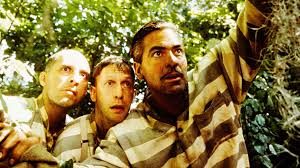 Perhaps the most obvious difference in the two versions of the story is the fact that Odysseus is a famous king and warrior, while Everett is a convicted con man who has escaped prison. Odysseus is motivated to return to his loved ones and to regain his rightful place as ruler. He is generally forthright about his identity and purpose, unless he is absolutely required to deceive, while Everett tends to operate in the opposite manner. Normally, he is lying, unless it is absolutely necessary to tell the truth. Everett was motivated to break out of his incarceration in order to stop his wife from marrying another man – one who would normally be considered a better choice of husband. Both characters are arrogant and self-centered, but Odysseus assumes his status as king and soldier provides him this right, while Everett just assumes a high status, with little reason or justification. The pride of both characters is made manifest through the presentation their fastidious nature. On occasion, Odysseus referred to his own appearance and prowess, how he had owned fine clothes and drawn the eyes of women (Cf. Book XIX, p. 357). Everett is obsessed with his hair, repeatedly announcing that he is a “Dapper Dan man” (Cf. 11:20 – 11:30; 19:10 – 19:30).
Perhaps the most obvious difference in the two versions of the story is the fact that Odysseus is a famous king and warrior, while Everett is a convicted con man who has escaped prison. Odysseus is motivated to return to his loved ones and to regain his rightful place as ruler. He is generally forthright about his identity and purpose, unless he is absolutely required to deceive, while Everett tends to operate in the opposite manner. Normally, he is lying, unless it is absolutely necessary to tell the truth. Everett was motivated to break out of his incarceration in order to stop his wife from marrying another man – one who would normally be considered a better choice of husband. Both characters are arrogant and self-centered, but Odysseus assumes his status as king and soldier provides him this right, while Everett just assumes a high status, with little reason or justification. The pride of both characters is made manifest through the presentation their fastidious nature. On occasion, Odysseus referred to his own appearance and prowess, how he had owned fine clothes and drawn the eyes of women (Cf. Book XIX, p. 357). Everett is obsessed with his hair, repeatedly announcing that he is a “Dapper Dan man” (Cf. 11:20 – 11:30; 19:10 – 19:30).
Both men are prone to use others to accomplish individual goals, even if it means the others must suffer or die. Odysseus leaves a trail of broken and dead men in his wake, while Everett convinces his two prison-mates to escape with him, though one of them is due to be released in just a few days. Everett has no concern for the others, as long as his own needs are met. In this way, the Coen Brothers carried over one of Odysseus’s primary personality traits. In the same way, they utilized Odysseus’s ability to use words. Both characters are presented as eloquent speakers, able to influence others with their ability to communicate.
In the penultimate confrontation in each story, matters proceed differently and the resolution of the problem is uniquely handled in each. Odysseus, disguised as a beggar, eventually demonstrates his strength and prowess, strings his legendary bow, and kills his adversaries. His wife and daughters easily recognize Everett, disguised in order to avoid being recaptured by the authorities, and when his main adversary is confronted, Everett is soundly whipped. Regardless of the differences, in the end, both men achieve their goals, regain their former positions, and win their wives.
Comparison and Contrast of Supporting Characters
One of the major differences between the two tales would be the importance of the hero’s offspring. In The Odyssey, Telemachos is vital to the story. In fact, he is one of the primary motivations for Odysseus to return home, as the son will soon by murdered by interlopers who are attempting to take Odysseus’ rightful place as king. Not only does the son prove to be an impetus for Odysseus, he takes on an important role in his own right (consider Book II: “A Hero’s Son Awakens” and Book XVI: “Father and Son”). He sets out to seek his father, he opposes the enemy at home, and he holds things together until the father returns, when they both ultimately overcome the suitors. In the film, however, there is no son. Everett has several children, all daughters (first seen at 59:38). There is no danger to the daughters by suitors or interlopers. Everett’s daughters are young and have a very minimal role in the film.
Likewise, the enemies that are encountered by Odysseus and Everett articulate a fidelity to the essence of the story, while clearly demonstrating that that essence can be presented in multiple ways. Consider the Cyclops. Odysseus matches wits and strength with Polyphemus in Book IX, blinding him and escaping, after the monster kills and eats some of the hero’s men (156, 160-61). Conversely, Everett encounters a one-eyed bible salesman who beats him and robs him, and crushes a frog that is believed to be a bewitched companion (49:20 – 54:30). Eventually the bible salesman meets a bitter end, just as Polyphemus, so it is clear that there are similarities in the villains: one eye, evil intentions, abuse of the hero, death (or at least perceived death) of companions. There are also differences between the two versions of Cyclops. Polyphemus is Poseidon’s son, and his prayers to his father contribute to Odysseus’s problems. The Coens’ bible salesman has no lineage (though the bible connection provides an interesting religious connection), and he steals Everett’s money and car, and he abandons his victims, rather than them escaping through their wits. Both versions provide for a worthy adversary, who hinders the progress of the hero, and the differences showcase that both are suited to their settings.
Similarly, Odysseus is tempted by the Sirens, desiring to go to them, but prevented from doing so because he is lashed to the ship’s mast, while his men have their ears plugged and cannot be seduced by the Siren’s song (Book XII, 214ff.). Everett, on the other hand, not only encounters an equivalent of the Sirens, but so do his friends. We are not sure exactly what transpires at the moment of contact, but one companion is temporarily lost and Everett and another companion are rendered unconscious (42:40 – 45:20). While Everett is not physically damaged, the Sirens do play a role in slowing his progress toward his ultimate goal.
There are many other minor characters that are presented in both versions, but one important similarity is the way both stories bring in popular cultural figures of the day. In Book XI: “A Gathering of Shades,” Odysseus converses with several ghosts of famous dead people. Some of these are former companions, family members, and friends, but most are well known individuals, who would be readily recognizable to the contemporary readers; Achilles, Agamemnon, Heracles, and others are brought before Odysseus to give advice, provide history, and to establish the hero’s bona fides.
Everett does not speak with the dead, but characters such as George “Baby Face” Nelson come across his path. Nelson was a famous gangster of the Depression-era and would have been recognizable by the contemporary audience. The characters, even when based upon historical persons, are fictionalized, but they lend credence to the setting and provide texture and depth to Everett’s journey.
Adaptation
The primary and most obvious change is the altered setting. While Homer places his hero in the immediate aftermath of the Trojan War, the Coens set Everett in the midst of the Great Depression. Odysseus travels primarily by ship, while Everett rides in automobiles. While both versions have the protagonists kept as prisoners at one time or another, the written story has him kept in caves or bound by supernatural entities. The film utilizes a chain gang. This change in setting affects the mese-en-scène, which refers to the world of the story: what is staged, the setting, the reality in which the film or poem operates (Villarejo 28). The differences demonstrate that there is flexibility in what is translated from the text to the screen. The story, characters, theme, and other elements are not set in stone, but are variable, to be adjusted by the director and writer to fit the particular context of the work (Hutcheon 8, 10-12).
In the context of the Depression, the Coens’ film also includes a political race as a backdrop, to compare with Homer’s sea voyage setting. The political components of the written story are limited to Odysseus returning home to assume his role as king, taking his place with his queen. Everett has no such inclination, but the film’s politics address more pressing social considerations of the modern world: racism, cronyism, dishonest politicians, and the like. Through this changed setting, the Coens are able to make social commentary in a way that would be missing had they limited the setting to one identical to Homer’s.
So why did the Coens not include a son in the film version? The simple answer is that they did not consider it necessary. Homer wrote in ancient Greece, where paternal lineage was an important consideration. A man desired to have sons to continue on the family heritage. What would be Odysseus’ motivation to return home to a daughter that must be married off to another? The Coens produced a film in a different era. No longer are daughters considered lesser offspring. In fact, Everett takes special notice that they are his daughters and should carry his name. So while the parental concern is seen in both versions, the change from son to daughters can demonstrate a difference in social considerations.
Dudley Andrew argues that “adaptation is the appropriation of a meaning from a prior text,” and therefore the Coen Brothers are not required to produce the story verbatim, but rather to interpret the story to fit their own context (421). He goes on to argue that the differences in the two media require that there be some differences in presentation (425). Of particular concern for Dudley was the idea of connotation and what the reader/viewer would interpret from the story. The changing audience, from ancient Greece to modern America, necessitates some drastic changes to incorporate the social connotations that may be applied. So the Coens no longer need a son to tell their story. A set of daughters will work just as well or better. Rather than attach particular importance to the father-son relationship of Homer, they are able to shift focus to the marital relationship between Everett and Penny (his wife). While the Odysseus-Penelope relationship was in important part of the written work, it may not be as important as that of Odysseus-Telemachos, which is not even a consideration in the film.
Homer provides for a demi-god, the Cyclops Polyphemus, son of Poseidon, to oppose Odysseus. The Coens introduce “Big Dan” Teague, a traveling bible salesman in his place. The religious similarities are obvious, and the evil nature of both is quickly determined by the reader/viewer. The simple fact is that a supernatural one-eyed monster would not fit into the Great Depression-era setting of the film. A traveling salesman would be much more appropriate. Robert Stam argues that no filmmaker should truly be 100% committed to reproducing a written work. Not only would this usually entail a terribly long film (many, many hours in length), it would also bog the filmmaker down in details that simply do not make sense for that medium (15). He goes further to insist that if a filmmaker has nothing new to add to the story, then there is no purpose in filming it at all (16). Here, the Coens’ work seems to validate Stam’s concerns and admonitions.
In both versions, the hero is pursued and assaulted by supernatural forces. Odysseus is constantly hounded by the offended Poseidon, and only escapes from his clutches through the aid of Athena and her interventions on his behalf (Book I, 2-3). Everett, after initially escaping from prison, is followed and harassed by a sinister being, who eventually allows that he is not bound by “human institutions” and is set on killing Everett (1:34:00 – 1:37:00). Only the intervention of a flood saves Everett and his companions. The film entity is not Poseidon, though there is some symbolic irony in the fact that he is destroyed by water, but seems more akin to the Christian version of the devil, as described by the minor character Tommy (21:55 – 22:50). Again, this demonstrates the differences in audience from one version to the other, from ancient Greece to modern America.
In the same manner, music plays a vital role in the film, while not so important in the written work. Since the film presents the story through sight and sound, it is only natural that such a medium will differ from the written work. This relates to Chatman’s argument that films rely on visual and non-assertive details, while novels do not (407-8). While minstrels and singers are seen from time to time in Homer’s work, they are not major characters (Book VIII, 126). Music’s role in the film is vastly different, as the Coens not only have Everett and his close companions present themselves as singers, producing a verifiable hit song, but the movie soundtrack becomes a major component of the storytelling itself. Odysseus is a warrior, while Everett becomes a singer and celebrity. It is not his physical strength that saves him in the end, but his celebrity status as one of the “Soggy Bottom Boys” (1:24:30 – 1:30:25). This is only one example of the impact that music has on the film that is missing from the written story. The film Sirens sing “Go to Sleep My Little Baby,” and other various religious and folks music songs are incorporated.
Of course, in a written work, there is little capability to share a musical number, outside of the lyrics themselves, so the emotional impact of the song is muted. In a film, however, the opportunity to utilize musical scores allows the filmmaker the opportunity to influence and impact the audience in a profound way, as the Coens’ did in this case. The soundtrack was awarded a Grammy as Album of the Year and reached the top spot on the music charts, becoming an eight time platinum album (Lewis). These facts demonstrate the power the music had on the audience and the wider culture to which the film connected. While Homer’s original has demonstrated its importance and reception as one of the great stories of all time, so the Coens’ version has been well received, and to this point, has maintained an admirable staying power. It would be fair to say that the film introduced an entirely new audience to the story of Odysseus.
Conclusion
There are many other examples that could be drawn from 12000 lines of text and nearly two hours of film, but these are sufficient to demonstrate that while films and written works can tell the same or similar stories, it is not incumbent upon the director to reproduce the work exactly. In fact, Stam and Hutcheon both argue that this is impossible to accomplish (Hutcheon 7). It is imperative that filmmakers adapt and recreate the story to fit a new audience, context, and medium. There is no art involved if the director is not adding a new twist or perspective, but when the film does add a new element, then the story takes on a life of its own. Neither medium is inherently superior or inferior to the other. They are simply different.
Novels have the advantage of great focus on detail, as the story line can be disrupted for a period of time to allow for detailed description. Movies cannot do this, as they must have continuous action (Chatman 407-8). This is one example of a difference in the medium, but in many other aspects, the artists must “find his or her own ways to evoke the sense of what the objects of the narrative look like,” using the properties and techniques available within the chosen medium (Chatman 419).
Are the two versions the same? Of course not. One is more traditional and ancient, concerned with social norms of a world long gone. The other is more modern, focused upon social concerns that are more prevalent today, and more accessible to a modern audience. Both of these stories, however, provide a wonderful look into the world of a man who is haunted by demons, but focused upon a worthy goal, allowing nothing to stop the eventual attainment of that desired result. In both versions, the protagonist is strong-willed and determined, an influential man who uses others to accomplish the tasks at hand and willing to put himself in danger to reach the prize. Homer and the Coen Brothers give different looks at the same story essence. Neither is superior or inferior, they are just different. Both are outstanding in their own way.
Works Cited
Andrew, Dudley. “Adaptation.” From Concepts in Film Theory. Oxford: Oxford University Press, 1984. PDF file.
Chatman, Seymore. “What Novels Can Do That Films Can’t (and Vice Versa).” Critical Inquiry, Vol. 7, No. 1. (Autumn, 1980). Univ. of Chicago Press. 121-140. PDF file.
Homer. The Odyssey. Trans. Robert Fitzgerald. New York: Farrar, Straus, and Giroux, 1998. Print.
Hutcheon, Linda. “Beginning to Theorize Adaptation.” A Theory of Adaptation. New York:Routledge, 2006. PDF File.
Lewis, Randy. “’O Brother’, Is It 10 Already?” L.A. Times. L.A. Times. (Aug 23, 2011). Web. 1 Aug 2014.
O Brother, Where Art Thou? Dirs. Joel and Ethan Coen. Perf. George Clooney, John Turturro, Tim Blake Nelson, and John Goodman. Universal, 2000. DVD.
Stam, Robert. “Introduction: The Theory and Practice of Adaptation.” Literature and Film. Eds. Robert Stam and Alessandra Rengo. Blackwell Press, 2004. PDF File.
Villarejo, Amy. “The Language of Film.” Film Studies: The Basics. London: Routledge, 2006. PDF File.
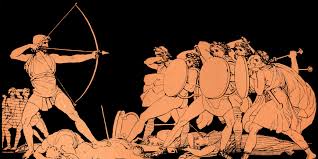
The Odyssey and O Brother, Where Art Thou?
5 Comments
Leave a Reply
Latest from Literature
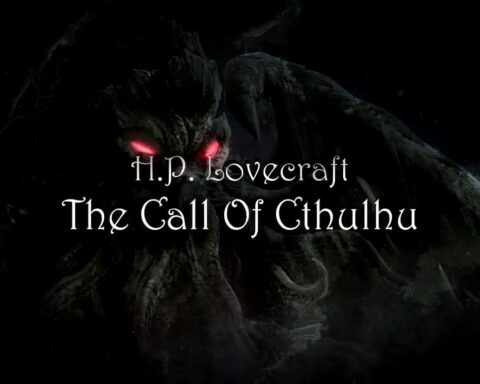
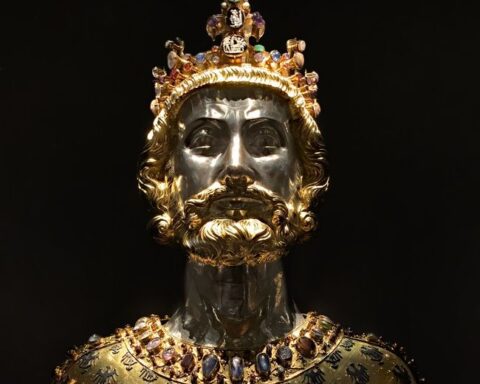
Legends of Charlemagne
His fame has been enhanced and magnified through a host of ballads and romances.
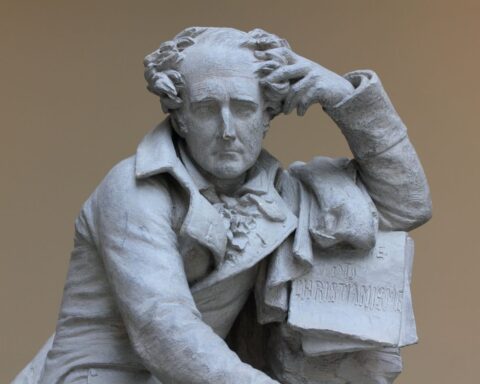
Chateaubriand (Part 2)
His journey in 1806, from Paris to Greece, Constantinople, Palestine, Egypt, and Carthage.

Old Ways
Editor’s note: Originally posted by Last Redoubt at https://lastredoubt.substack.com/p/old-ways Paper has a lot of problems. It’s bulky. It catches fire. More to the point, if I want to send something on paper
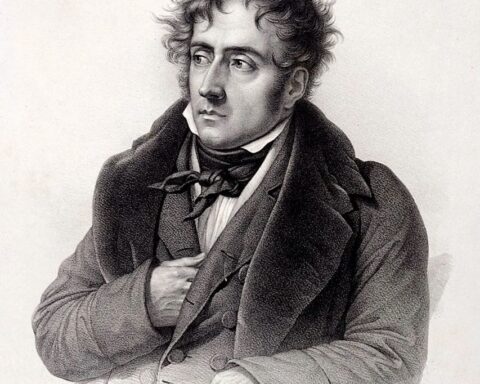
Chateaubriand (Part 1)
"It was in these disastrous days that Chateaubriand arose, and bent the force of his lofty mind to restore the fallen but imperishable faith of his fathers."


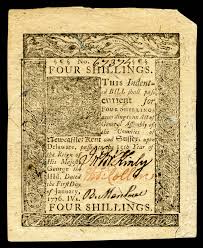
5
Both works are exceptionally religious in nature, too. Homer’s of the Ancient Greek, O Brother of mid-Twentieth Century America.
In either story, it was the Hero embracing the supernatural that allowed him to survive and eventually succeed. Everett’s on the fence until the end, but it’s only through Divine intervention does he survive the grasp of Death. Of course, he maintains his skepticism, but he doubts his doubts a bit more than before.
Great post on two great works of art of different ages and mediums.
[…] Men Of The West: https://www.menofthewest.net/odyssey-o-brother-art-thou/ […]
4.5
A thorough exploration of the parallels between the two works. A note: Yes, we all probably READ the Odyssey, but it was famously not a “written” work. It was memorized and passed down via oral tradition. Early on, you make several references to the written work, “work was penned”, etc. This essay would be stronger if this was addressed.